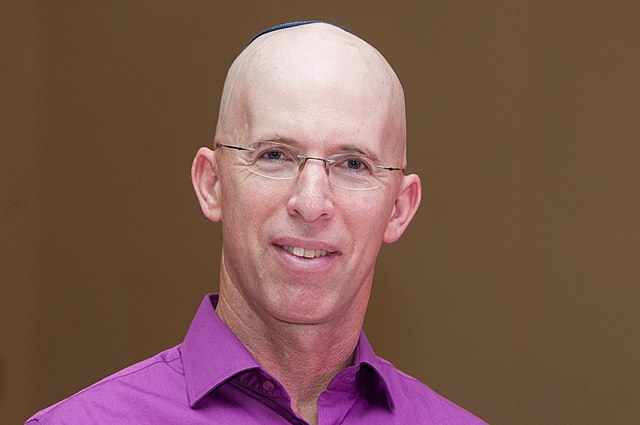Opinion
Book Shelf
Mindful Fundraising
A review of Mindful Fundraising by Sagi Melamed
Gefen Publishing, Jerusalem, 2021
208 pages, $30.00

Sagi Melamed via Wikimedia Commons
A Review by Stephen Donshik
Sagi Melamed has written a very clear, concise, and useful book about how to raise funds for a nonprofit organization. It is a perfect introduction to fundraising for people just starting work in the voluntary sector, and it is an excellent reminder for veteran fundraisers of the practices that lead to success. The book is full of ideas that will stimulate both professionals and volunteer leaders involved in fundraising to consider how to develop their organizations’ approaches to raising funds and how to formulate a strategy for approaching prospective, current, and past donors. Readers will find Melamed’s direct, accessible style to be both refreshing and thought provoking. Perhaps one of the most interesting aspects of the book is that the Melamed is an Israeli fundraiser who understands not only the basic concepts but also provides examples of how he has put them into practice. He is able to articulate an underlying principle guiding the partnership that exists when the fundraiser provides an opportunity to enhance the donor’s life through supporting the nonprofit and the people who receive the services offered by the organization. It is then the donor’s choice whether to take advantage of the opportunity. Although this is an accepted practice in most developed societies this is a unique approach coming from an Israeli fundraiser.
Mindful Fundraising begins with a discussion of the state of fundraising today and how it has changed over the last several decades—with a focus on how nonprofit organizations and their leadership have retooled their approaches to engaging and soliciting prospective and current donors. Although Sagi’s perspective is informed by his experience raising funds for Israeli organizations, his ideas, discussion points, conceptual formulations, and recommendations are applicable to raising funds and working with donors anywhere in the world.
One of the most engaging aspects of his discussion of fundraising principles is his referencing the professional and personal relationships he has developed with professional colleagues, academics, and donors over the years. His warmth and ability to establish lasting relationships with these people are evident from the stories and conversations he recalls, which provide real-life illustrations of his principles of practice. Melamed seems to be someone who “practices what he preaches” and is just not spouting conventional wisdom regarding working with donors.
In each subject he discusses he pays attention not only to fundraising’s human aspects but also to its important administrative, logistical issues: the “how-to’s” of fundraising. He focuses on how each organization should decide what type of fundraising effort is appropriate for its size and scope of activities in meeting pressing international, national, and/or local community needs. He guides organizations through the rigorous process of determining their fundraising needs and then how to articulate those needs to donors.
Throughout the twelve chapters, Melamed covers the essential components of fundraising. However, I question the order in which he discusses some important issues. For example, he first mentions cultivating donors in relation to fundraising trips on page 46. Similarly, he presents very basic information about what makes a good fundraiser and recruiting and hiring fundraising professionals in chapters 9 and 10, respectively. It would have been helpful to present this information earlier so that readers from the beginning could understand what qualities and skills make for a good fundraiser.
In the same way, it is not until halfway through the book that he states that “people give to people” is a key concept in cultivating and soliciting donors. The most important element of the solicitation process is the relationship that the solicitor, whether a volunteer leader or a professional fundraiser, develops with the potential donor. It is through the relationship they have established that the donor feels a sense of confidence and trust in the case for giving. Contributors generally give because they value and trust the relationship they have with the fundraiser and believe in the professional’s integrity. Although Melamed does discuss this in the book, he would have made a stronger case if he had introduced these ideas closer to the beginning of the book and used them to inform his ideas about the structure and function of the fundraiser in the organization.
Having said this, Mindful Fundraising can be a valuable tool for organizations, professionals, and volunteer leaders involved in fundraising activities. Whether you are a chairperson of a resource development committee, a chief executive officer of a nonprofit, a professional director of resource development, or a line staff person responsible for raising funds, the framework offered in this book will help you ensure that fundraising is being done in a way that delivers a clear, integrated, and consistent message about what the organization does in the present and plans to do in the future. This book can assist the nonprofit and its staff and volunteers to communicate in a way that encourages potential donors and donors to support its present services and future plans.
Stephen G. Donshik is a retired lecturer from the Hebrew University’s School of Social Work’s MA Program in Non-Profit Management.












